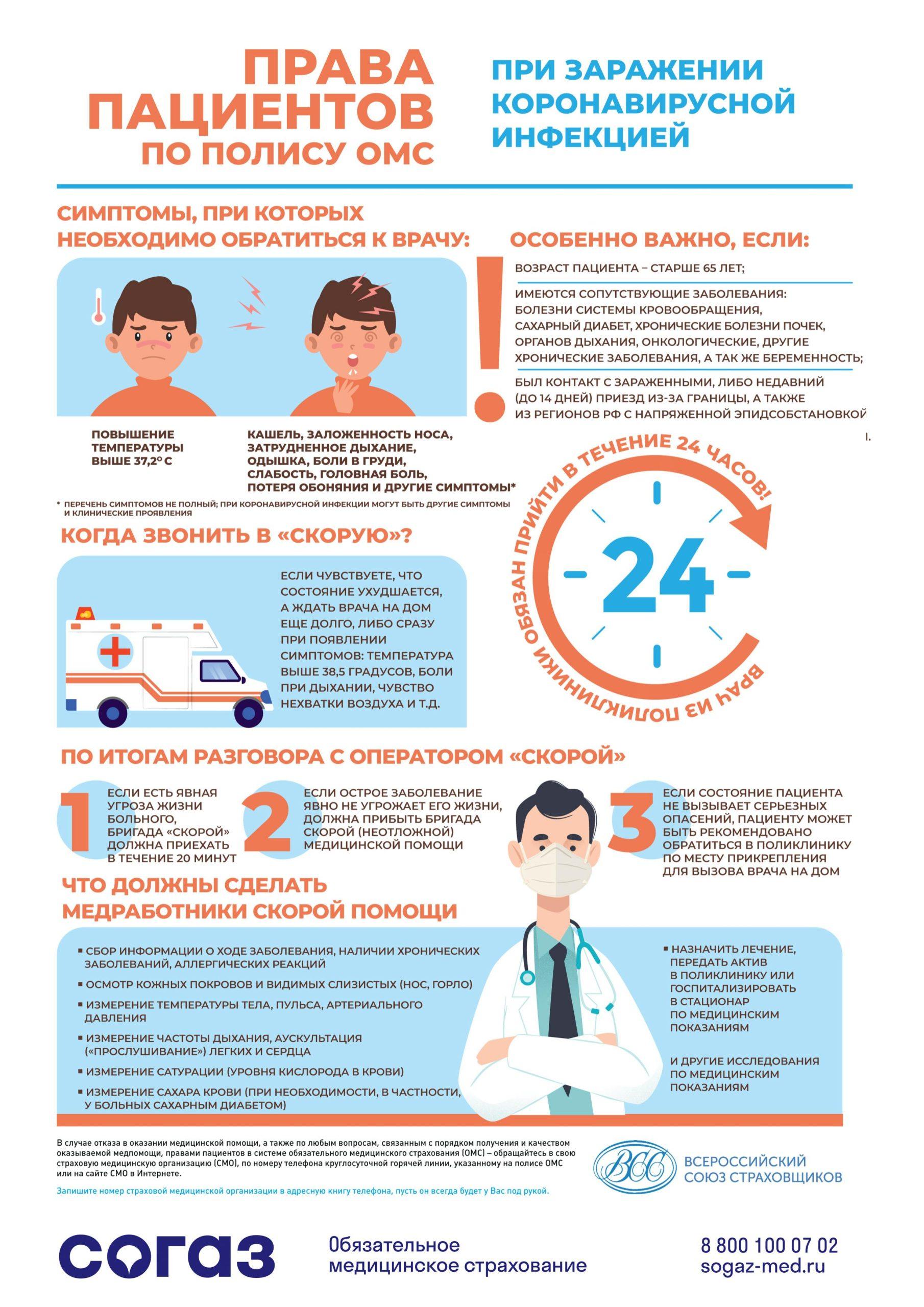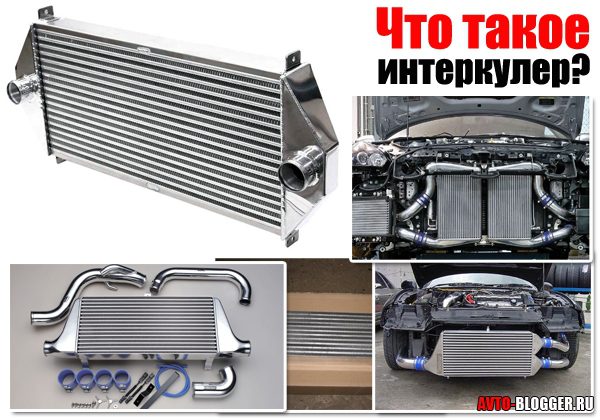
Intercooler what is it in the car
Content
- What is an intercooler
- What is an intercooler for?
- Principle of operation
- Intercooler types
- Placement of intercoolers
- Efficiency of application
- Can I remove it?
- Is it possible to remove the part
- Selection criteria for self-installation
- Install a new intercooler
- Features of operation and the main causes of failure
- DIY intercooler repair
- Related videos
- Questions and answers:
Many car enthusiasts often mention that their car is equipped with a turbocharged engine. Well, of course, everyone will be pleased to say that under the hood he has not only atmospheric pressure, but also a mechanical supercharger. But most of them do not fully understand the whole structure of the engine turbocharging system.
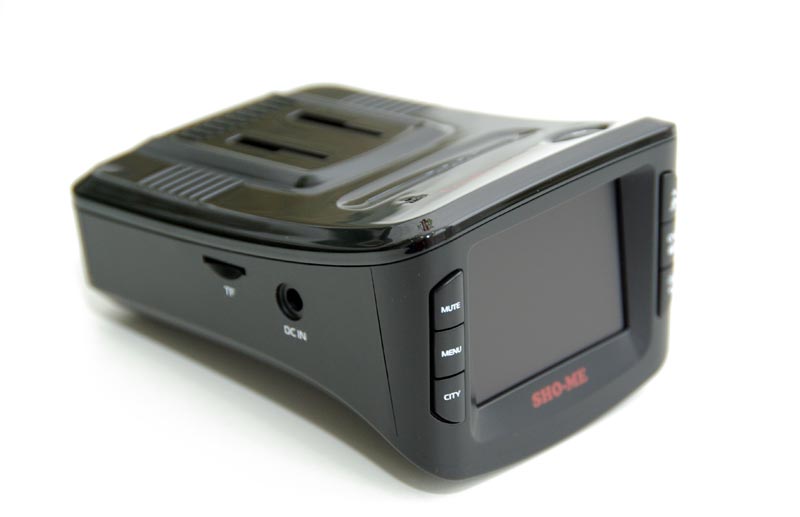
Therefore, in this article we will try to talk about one of the components of turbocharging, namely the intercooler - what it is in a car, the principle of operation, and also why an intercooler is needed on turbocharged engines.
What is an intercooler
An intercooler is a mechanical device (similar to a radiator) used to cool the intake air of a turbine or supercharger (compressor).
What is an intercooler for?
The intercooler's job is to cool the air after it has been passed through a turbine or supercharger. The fact is that the turbine creates air pressure, due to compression, the air is heated, respectively, with intensive and constant boost, the temperature at the inlet to the cylinder can differ significantly from the temperature of the cooling medium.
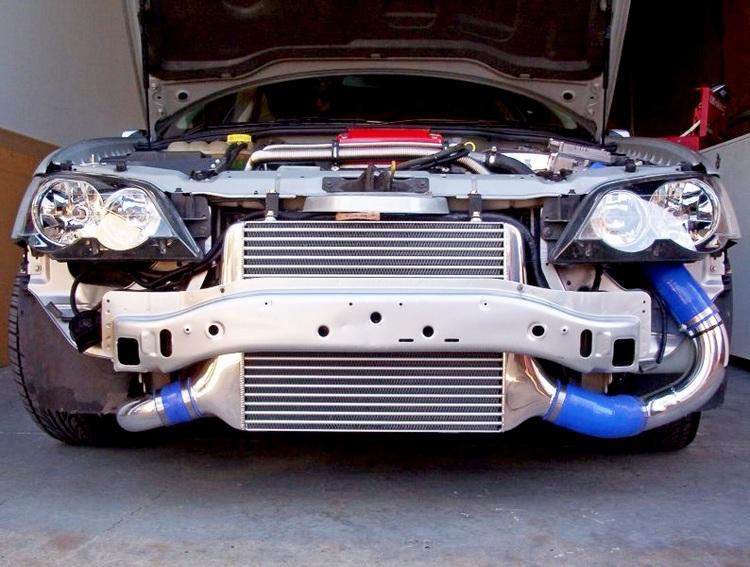
Principle of operation
Turbochargers work by compressing air, increasing its density before it reaches the engine cylinders. By compressing more air, each cylinder of the engine is able to burn proportionally more fuel, and create more energy with each ignition.
This compression process creates a lot of heat. Unfortunately, as the air gets hotter, it also becomes less dense, reducing the amount of oxygen available in each cylinder and affecting performance!
The intercooler is designed to counteract this process by cooling the compressed air to provide the engine with more oxygen and improve combustion in each cylinder. In addition, by regulating the air temperature, it also increases the reliability of the engine by ensuring the correct air to fuel ratio in each cylinder.
Intercooler types
There are two main types of intercooler that work in different ways:
Air-to-air
The first option is an air-to-air intercooler, in which the compressed air is passed by many small tubes. Heat is transferred from the hot compressed air to these cooling fins, which in turn are cooled by the rapid flow of air from the moving vehicle.

Once the cooled compressed air has passed through the intercooler, it is then fed into the engine intake manifold and into the cylinders. The simplicity, light weight and low cost of air-to-air intercoolers make them the most popular choice for most turbocharged vehicles.
Air-water
As the name suggests, air-to-water intercoolers use water to lower the temperature of the compressed air. Cool water is pumped through small tubes, taking heat from the compressed air as it passes through the device. When this water heats up, it is then pumped through the radiator or cooling circuit before re-entering the intercooler.
Air-to-water intercoolers tend to be smaller than air-to-air intercoolers, making them suitable for engines where space is high, and because water heats the air better than air, is suitable for a wider temperature range.
However, the increased design complexity, cost, and weight associated with air-to-water intercoolers mean they tend to be less common and installed on automotive engines.
Placement of intercoolers
Although, in theory, air intercoolers can be located anywhere between the turbocharger and the engine, they are most efficient where there is better airflow, and are usually located in front of the car behind the main radiator grille.

In some vehicles, the location of the engine is contrary to this and the intercooler is placed on top of the engine, but the airflow is generally less here and the intercooler can be exposed to heat from the engine itself. In these cases, additional air ducts or scoops are installed in the hood, which increase the flow of air.
Efficiency of application
When installing any additional equipment, each motorist always pays attention to the reasonableness of using a part or a whole system. As far as the efficiency of the intercooler is concerned, the difference between its presence and its absence is decently felt. As we understood, the intercooler cools the air pumped into the engine by the turbine. Since the supercharger operates at high temperatures, it supplies hot air to the engine.
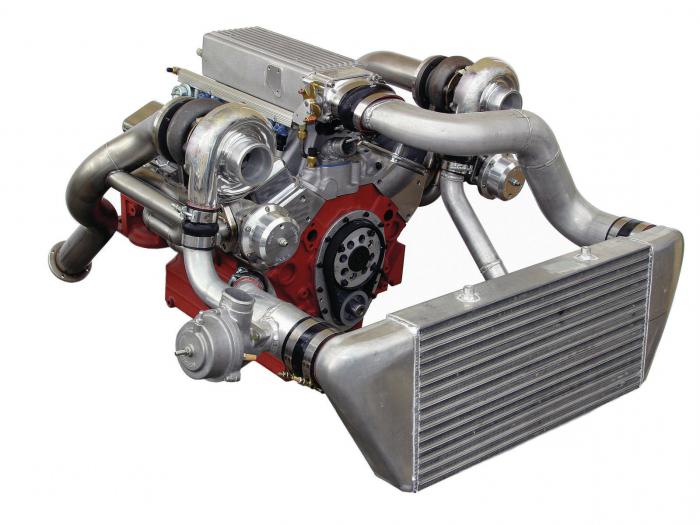
Since hot air has a lower density, it contributes to less efficient combustion of the air / fuel mixture. The colder the air, the higher its density, which means more oxygen gets into the cylinders and the engine gets extra horsepower. For example, if the incoming air is cooled by just 10 degrees, the motor will be about 3 percent more powerful.
But even if you take a conventional air intercooler (air passes through the radiator tubes), until it reaches the engine, its temperature will drop by about 50 degrees. But if a water intercooler is installed in the car, then some modifications are able to lower the air temperature in the engine intake system by as much as 70 degrees. And that's a 21 percent increase in power.
But this element will manifest itself only in a turbocharged engine. First, the naturally aspirated engine will have a hard time pumping air through the enlarged intake system. Secondly, in a short intake system, the air does not have time to heat up, as in the case of using a turbine. For these reasons, it makes no sense to install an intercooler in such motors.
Can I remove it?
If the intercooler interferes with the car owner, this system can be dismantled. But this can only make sense if the car was not previously equipped with this system. And even if the car has been upgraded, the lack of an intercooler will immediately become noticeable. When the installation of an intercooler has led to an increase in engine power by 15-20 percent, the absence of this part will immediately become noticeable.
Is it possible to remove the part
But in addition to reducing the power of the internal combustion engine, in some cases, dismantling the intercooler can even lead to engine damage. This can happen if this system is part of the motor design and is included in the factory equipment.

On turbocharged internal combustion engines, you should not remove the intercooler (again: if it is factory equipped), because it provides the additional cooling required for adequate engine operation. Due to critical temperatures, its parts may fail.
Selection criteria for self-installation
If it becomes necessary to install an intercooler in the car (modification that differs from the factory one, or generally as a new system for the motor), then this system must comply with the following parameters:
- Sufficient heat exchanger area. As you know, air is cooled due to the heat exchange process, which takes place in the radiator (the same process occurs in the radiator of the engine cooling system). The larger the radiator area, the higher its efficiency. This is physics, and there is no way to get rid of it. Therefore, it makes no sense to buy a small radiator - it will not be able to add a noticeable amount of horsepower. But even a very large part may not fit under the hood.
- Section of the tubes of the system. You should not use a thin line (there is less air in it, therefore it will be cooled more), because in this case the turbine will experience an additional load. Air must flow freely through the system.
- Heat exchanger structure. Some motorists think that a radiator with thicker heat exchanger walls will be more efficient. In fact, the system will only get heavier. The efficiency of heat transfer is inversely proportional to the thickness of the walls: the greater their thickness, the lower the efficiency.
- The shape of the highway. The smoother the bends in the system, the easier it will be for the turbine to push the air to the motor. Therefore, preference should be given to tapered tubes, and the bend of the branch pipes should have the largest possible radius.
- Tightness. It is important to completely eliminate the loss of air circulating in the system or its suction. For this, all pipes of the system must be fixed as tightly as possible. This is especially true for water intercoolers (so that the coolant does not ooze from the system).
Install a new intercooler
If the car is already equipped with an intercooler, then the system can be modified by installing a more efficient modification. As we discussed earlier, when choosing, it is necessary to take into account the shape of the tubes, the area of the radiator and the thickness of the walls of the heat exchanger.
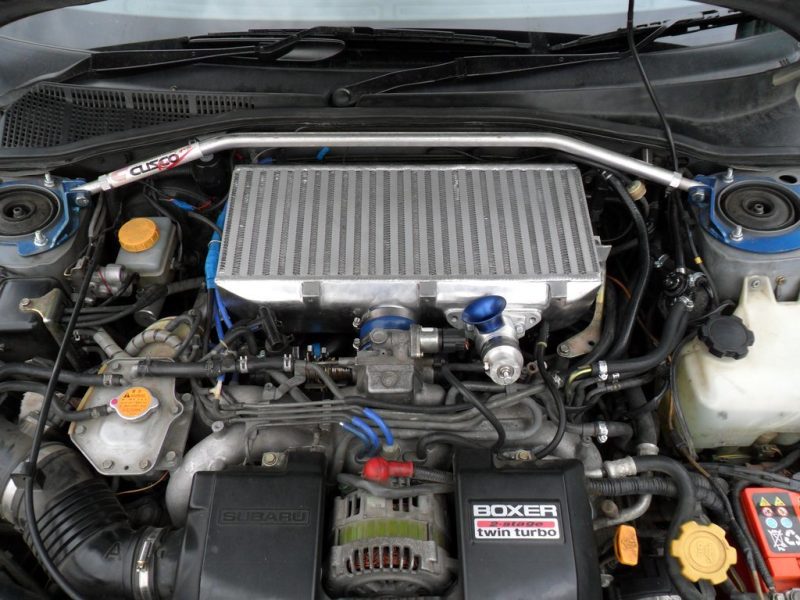
To replace the part, you will also need to purchase other pipes, because long analogs will break on bends, which will lead to poor air flow into the cylinders. To replace the intercooler, it is enough to remove the old radiator and replace it with a new one with suitable pipes.
Features of operation and the main causes of failure
Most factory intercoolers function well for a long period of time. Despite this, they still need periodic maintenance. For example, during a routine inspection in the system, one of the following malfunctions can be detected:
- Depressurization of the line. This happens when there is excessive pressure in the system. In this case, the pipe may either rupture, or the coolant will begin to leak at the junction (applies to water intercoolers). This malfunction may be indicated by a drop in engine power due to insufficient cooling of the air entering the cylinders. In case of a rupture, the pipes must be replaced with new ones, and it is better to clamp the bad connection.
- The duct cavity is contaminated with oil. A small amount of lubricant always gets into the intercooler due to the abundant lubrication of the turbine. If a serviceable engine began to take more than one liter of oil per 10 thousand kilometers, it is necessary to check if the turbine is taking too much oil.
- Damage to the radiator. Mechanical damage is most often found in intercoolers installed in the lower part of the engine compartment (mostly many install it under the main cooling radiator).
- Clogged radiator fins. Since a large amount of air is constantly passing through the heat exchanger, dirt appears on its plates. This happens especially often in winter or spring, when a large amount of sand and chemicals that sprinkle the roads get onto the radiator located under the front bumper.
DIY intercooler repair
In order to repair the intercooler, it must be dismantled. The subtleties of this process depend on the type of device and its location. But regardless of this, it is necessary to remove the intercooler on a cooled engine, and the ignition system must be turned off.

To repair the intercooler, you may need:
- External or internal cleaning of the heat exchanger. Various chemicals have been developed to accomplish this procedure. Depending on the type of cleaning agent and the complexity of the radiator design, the cleaning process may take a couple of hours. If the heat exchanger is heavily soiled, it is immersed in a container of cleaning agent for several hours.
- Elimination of cracks. If the intercooler is water, and its radiator is made of aluminum, then it is advisable to replace it with a new one. In the case of using other materials, soldering can be used. It is important that the material of the patch matches the metal from which the heat exchanger itself is made.
To fix most intercooler problems, there is no need to go to expensive service centers. If you have experience in soldering radiators, then even mechanical damage to the heat exchanger can be repaired on your own. You can check how well the intercooler has been repaired during the trip. If the car has regained its former dynamism, it means that the air cooling for the motor is efficient.
Advantages and Disadvantages of Using an Intercooler
The main advantage of using an intercooler is to increase the power of the turbocharged engine without unpleasant consequences due to tuning errors. However, the increase in horsepower will not be associated with the consumption of more fuel.
In some cases, an increase in power is observed up to 20 percent. If the car is checked for compliance with environmental standards, then this figure after installing the intercooler will be as high as possible.
But with its merits, the intercooler has several significant disadvantages:
- An increase in the intake tract (if this system is not part of the standard equipment) always leads to the creation of resistance to the air entering the engine. In this case, the standard turbine will need to overcome this obstacle in order to achieve the required boost level.
- If the intercooler is not part of the powerplant structure, additional space will need to be found to install it. In most cases, this is the place under the front bumper, which is not always pretty.
- If a radiator is installed under the front bumper, this additional element is susceptible to damage, as it becomes the lowest point in the car. Stones, dirt, dust, grass, etc. will turn out to be a real headache for the car owner.
- If the intercooler is installed in the fender area, slots will need to be made on the hood to install additional air intakes.
Related videos
Here is a short video overview of the operation of air intercoolers:
Questions and answers:
What is a diesel intercooler for? As in a gasoline engine, the function of an intercooler in a diesel unit is to cool the air entering the cylinders. This allows more air to flow in.
How does an intercooler radiator work? The principle of operation of such a radiator is the same as that of an internal combustion engine cooling radiator. Only inside the intercooler is the air sucked in by the motor.
How much power does the intercooler add? It depends on the characteristics of the motor. In some cases, the internal combustion engine shows a power increase of up to 20 percent. In diesel engines, the radiator is installed between the compressor and the intake manifold.
ЧWhat will happen if the intercooler is clogged? If it cools the turbocharger, it will affect the operation of the supercharger, which will lead to its failure. When an intercooler is used to cool the air, there will be poor flow through a clogged radiator.
